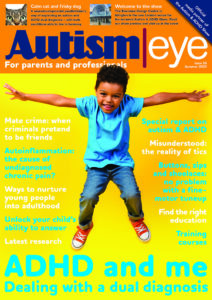Three separate autism subgroups have distinct metabolic patterns, new research shows.
The groups included the best-behaved children, the most challenging, and others with problem behaviours and co-occurring conditions that showed the highest IQs.

Rachel Kelly says her research could be a “critical first step” towards personalised treatment for autistic children
Assistant Professor Rachel Kelly, of Brigham and Women’s Hospital and Harvard Medical School, was one of the researchers on the project.
‘First step towards personalised approaches’
In an email, she said the findings “represent a critical first step towards more personalised management approaches” for autistic children.
The Boston-based researchers studied records of 2001 people. Their ages were from four to 17.
The records came from the Simons Simplex Collection. This is a data collection from 2,700 families for use in autism research.
The researchers wanted to find subgroups with common challenges and then investigate whether they also had similar metabolic profiles.
Among other characteristics, they found that the best-behaved children had global decreases in lipid metabolites, which are involved in storing fats for energy and building cell membranes.
Dysfunctioning membrane lipids
The most challenging children showed dysfunctioning membrane lipids and increases in lipid oxidation.
Membrane lipids protect cells from being penetrated or breached. Lipid oxidation, meanwhile, happens when unsaturated fatty acids react with oxygen.
The children with problem behaviours and co-occurring conditions that had the highest IQs saw increases in sphingolipid metabolites and fatty acid byproducts.
Sphingolipid metabolites are molecules involved in cell division, differentiation and cell death.
Subgroups may reflect biological mechanisms
The scientists say the distinct metabolic patterns within the autism subgroups may reflect biological mechanisms that cause certain characteristics.
The findings may have “important clinical applications” for “personalised medicine” and “managing ASD (autism spectrum disorder) symptoms”, say the researchers.
The researchers published their findings in the journal Brain, Behaviour and Immunity in March.
Related:
- Brain activity reveals autism subgroups
- Trials to start on new autism drug
- Gene link found to autistic behaviours
- Links found to bipolar and schizophrenia
- Children re-diagnosed with brain illness
- Thousands of children ‘misdiagnosed’
Published: 10 April 2023















